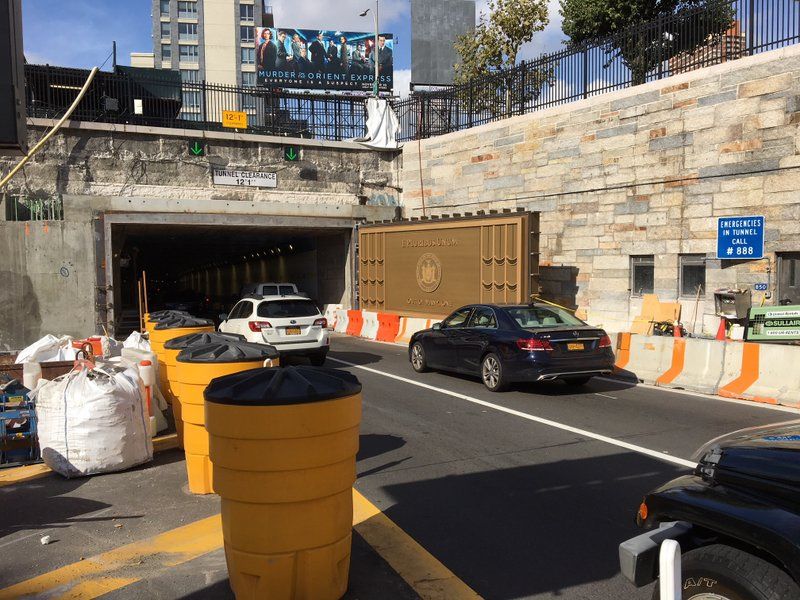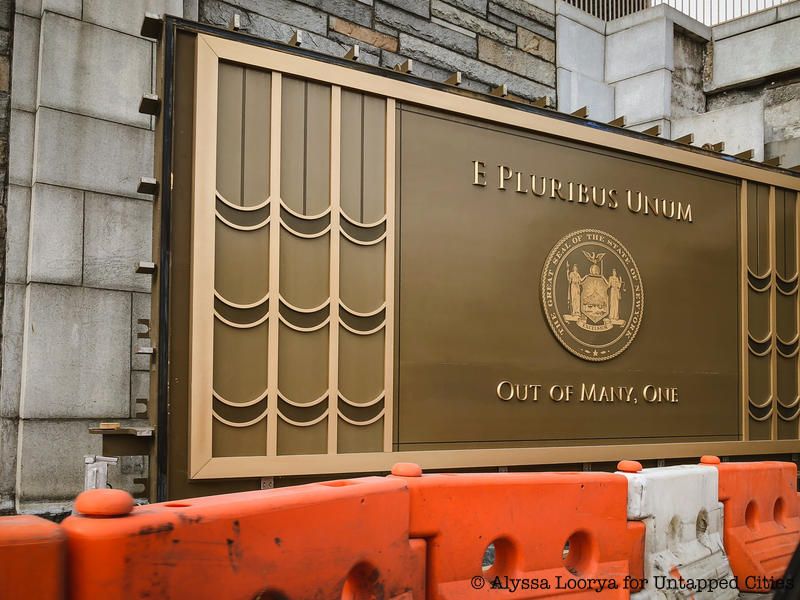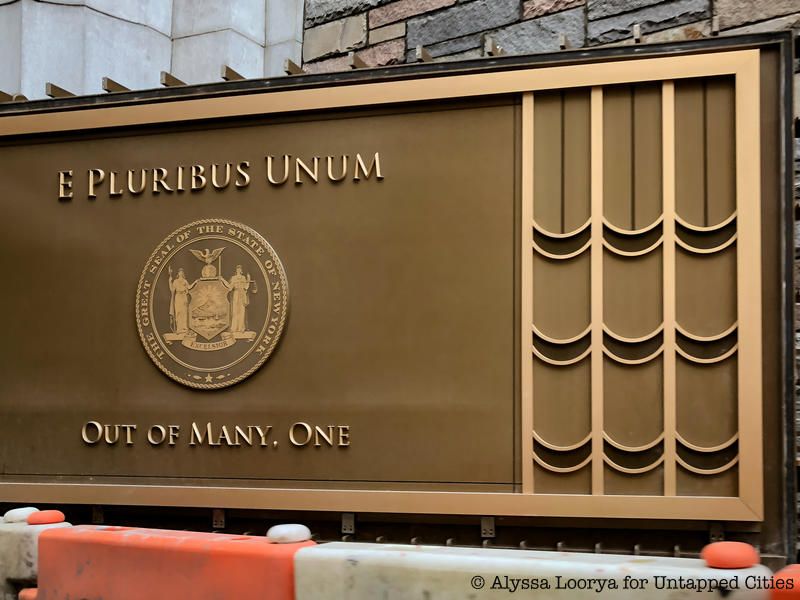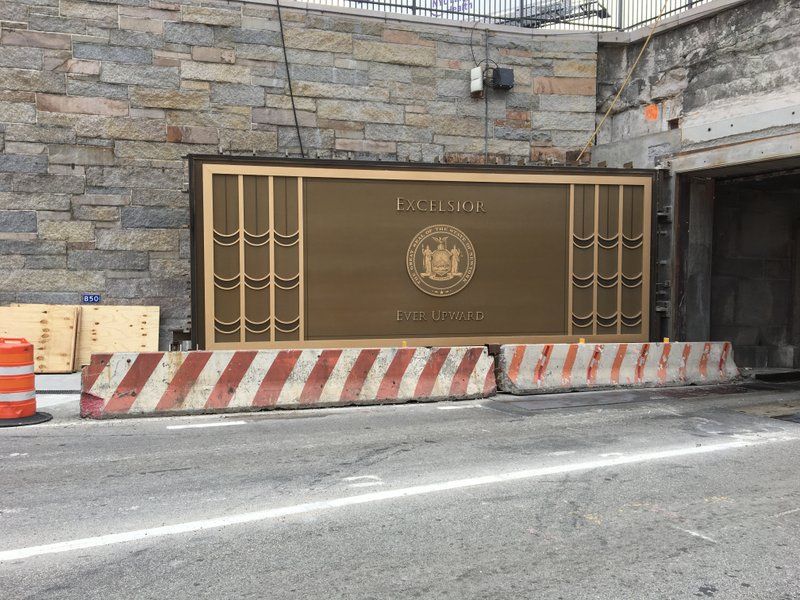After-Hours Tour of the Fraunces Tavern Museum: "Path to Liberty"
Explore a new exhibit inside the oldest building in Manhattan, a witness to history throughout the Revolutionary War Era!


If you’ve been on the Queens Midtown Tunnel or the Hugh L. Carey Tunnel recently, you may have noticed the installation of handsome flood gates. The bronze-colored flood gates, when employed, can create a water-tight barrier that seals the entire portal to the tunnels. The doors have the seal of the State of New York on them as well as the United States motto “E Pluribus Unum,” along with the translation “Out of Many, One.”
We asked the MTA about these gates, which weigh 44,600 pounds each. They’re 29 feet long and 14 feet high, and almost two feet thick at 22 inches. The initiative is part of the long-term flood mitigation program implemented after Superstorm Sandy.

Photo courtesy MTA
So far, there are eight flood gates in place. The gates are made by Walz & Krenzer, Inc., of Oxford, CT, a company that specializes in custom watertight enclosures. In this video starting at minute mark 2:36, you can see a team closing the doors and you can see a view from the inside of the tunnel once the door is closed.
When the tunnel is operating in regular conditions, the flood gates sit on jacks that are mounted to the sidewalk at the side of the portals. In an impending storm event, a two-man crew can deploy the flood gates, with the help of a fork-lift or front-end loader. The crew will also remove the steel road plates that cover the gate receiver trough. As Christopher McKniff, Media Liaison for Bridges/Tunnels & NYC Transit, tells us, “The gate is then latched to the face of the tunnel portal and within the trough, so the compression seals around the full perimeter of the gate creating a water-tight barrier. The full closing operation will take approximately 30 minutes.”

Photos by Alyssa Loorya/Chrysalis Archaeology

Flood gate at the Hugh L. Carey Tunnel

Photo courtesy MTA
Next, discover the Top 11 Secrets of the Queens Midtown Tunnel and the Top 10 Secrets of of the Hugh L. Carey Tunnel (formerly Brooklyn-Battery Tunnel).
Subscribe to our newsletter